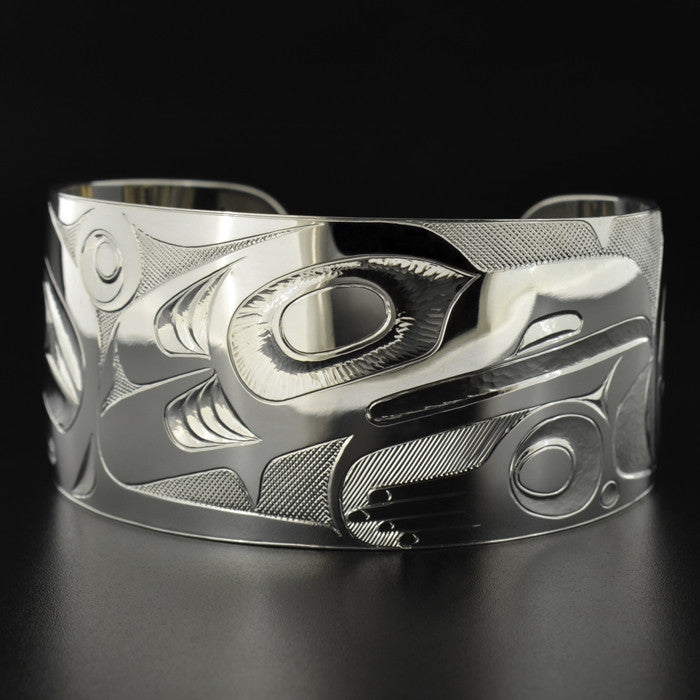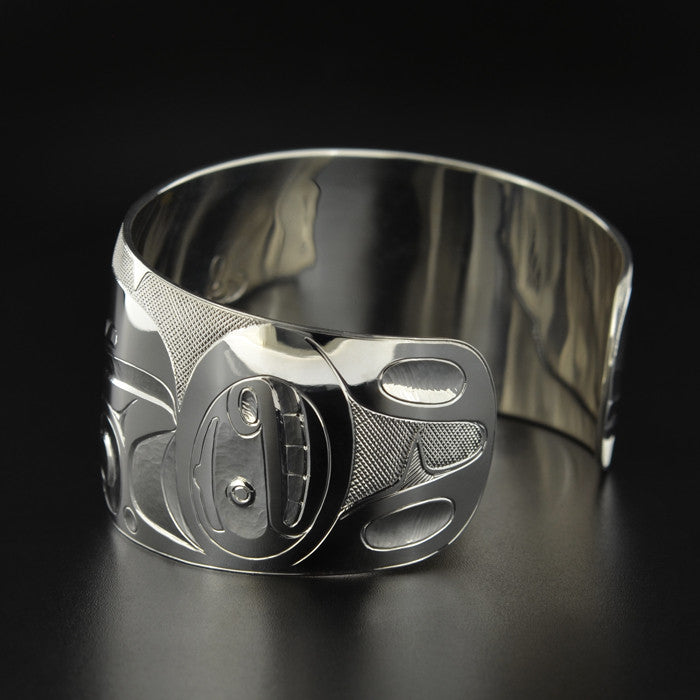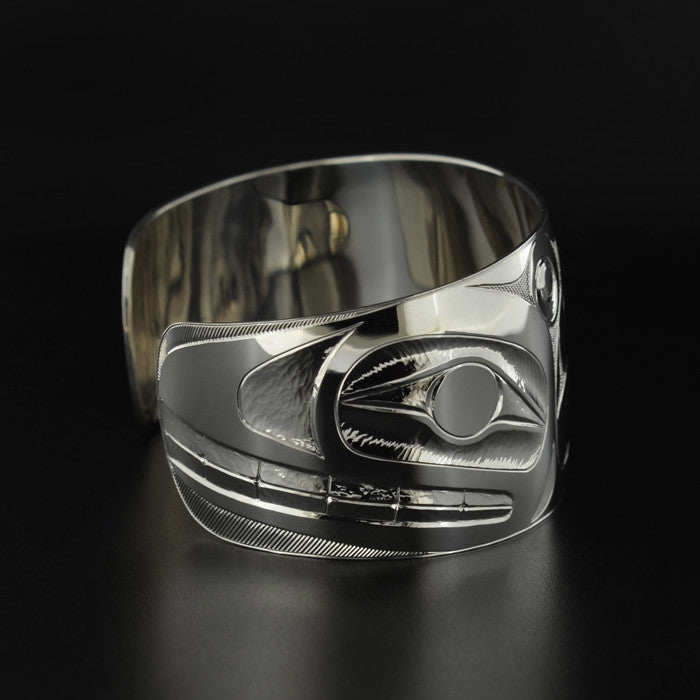Raven-Finned Killerwhale - Silver Bracelet



Raven-Finned Killerwhale - Silver Bracelet
Gerry Marks
1 1/4" x 6"
A Haida legend tells of a seal hunter who happened to spear a small killerwhale. He was at once surrounded by the herd, who threatened to kill him unless he paid for the death of the young whale, who was the son of their chief. The hunter gave them food and all that was in his canoe. Demanding more, the whales wanted his spear (an heirloom that brought success in hunting) but he refused to give it up. The Whales then called for their chief to talk with the hunter. Across the water came the chief—a large whale having a tall dorsal fin with a raven perched on top. Finally the hunter gave up his valuable spear and the whales disappeared, but to prevent him from starving, they caused fish to be washed up on the beach. The hunter filled his canoe and returned home.
You can use product metafields to assign content to this tab that is unique to an individual product. Use tabs to highlight unique features, sizing information, or other sales information.
Gerry Marks
CULTURAL GROUP:
Haida
BORN:
June 20th, 1949 (d. March 27, 2020)
BIRTHPLACE:
Vancouver, BC
Gerry Marks studied with Freda Diesing in Prince Rupert in 1971, and attended the Gitanmaax School of Northwest Coast Indian Art, where he studied under Alfred Joseph. During his time at Gitanmaax (Ksan), Gerry also learned to make his own engraving tools. During his training, he was greatly influenced by Pat Dixon, Francis Williams, Robert Davidson, and Bill Holm. In 1977, Gerry carved a 25-foot totem pole with Francis Williams, and helped Robert Davidson to carve the Edenshaw Memorial House front in Masset. That same year, he worked with Peter Page at the Treasures of London Master Craftsmen Workshop in London. Gerry has pieces in the BC Provincial Museum, the National Museum of Ethnology, and Osaka Museum. His first repoussé bracelet was purchased by the Canadian government's Ministry of Indian Affairs. Throughout 2009 and 2010, Gerry was working from Malaysia and Sweden. In 2019, he was featured in the landmark publication Understanding Northwest Coast Indigenous Jewelry by author Alex Dawkins. His carving style was characterized by precise lines and minute detail. Every surface of his pieces were textured and perfectly finished.



